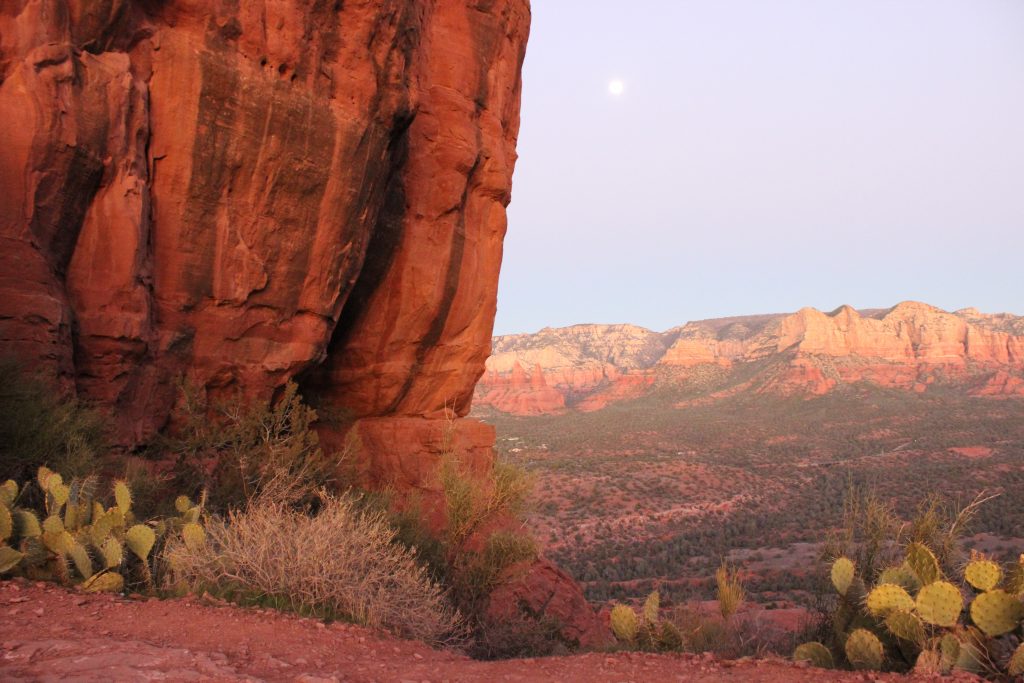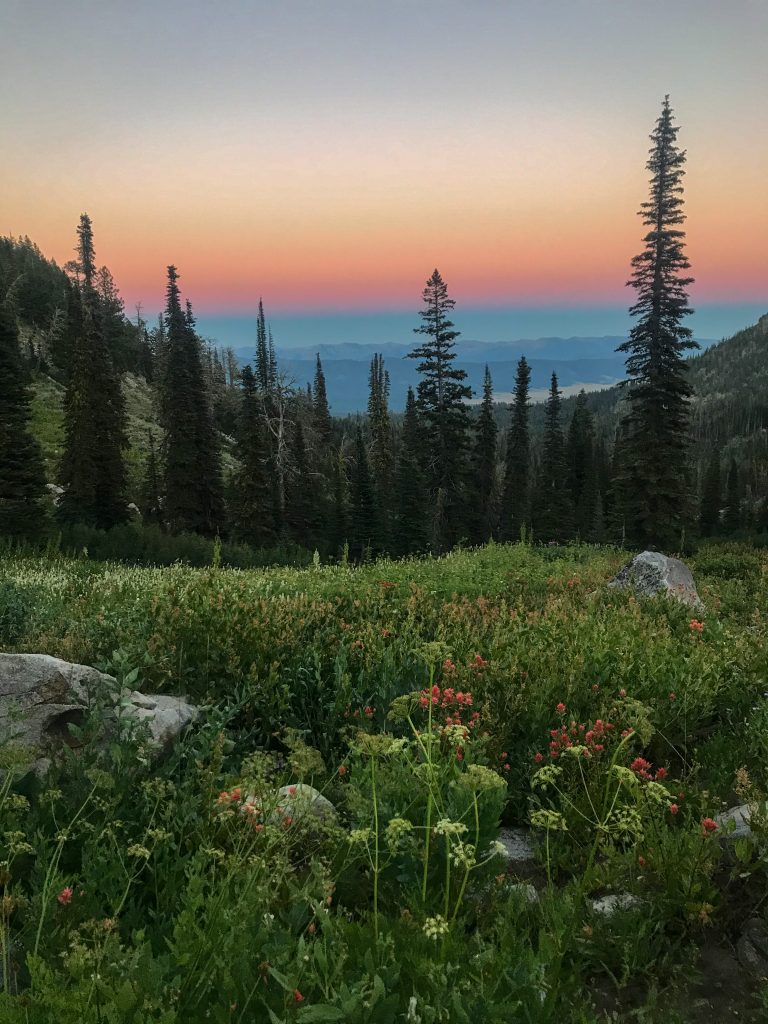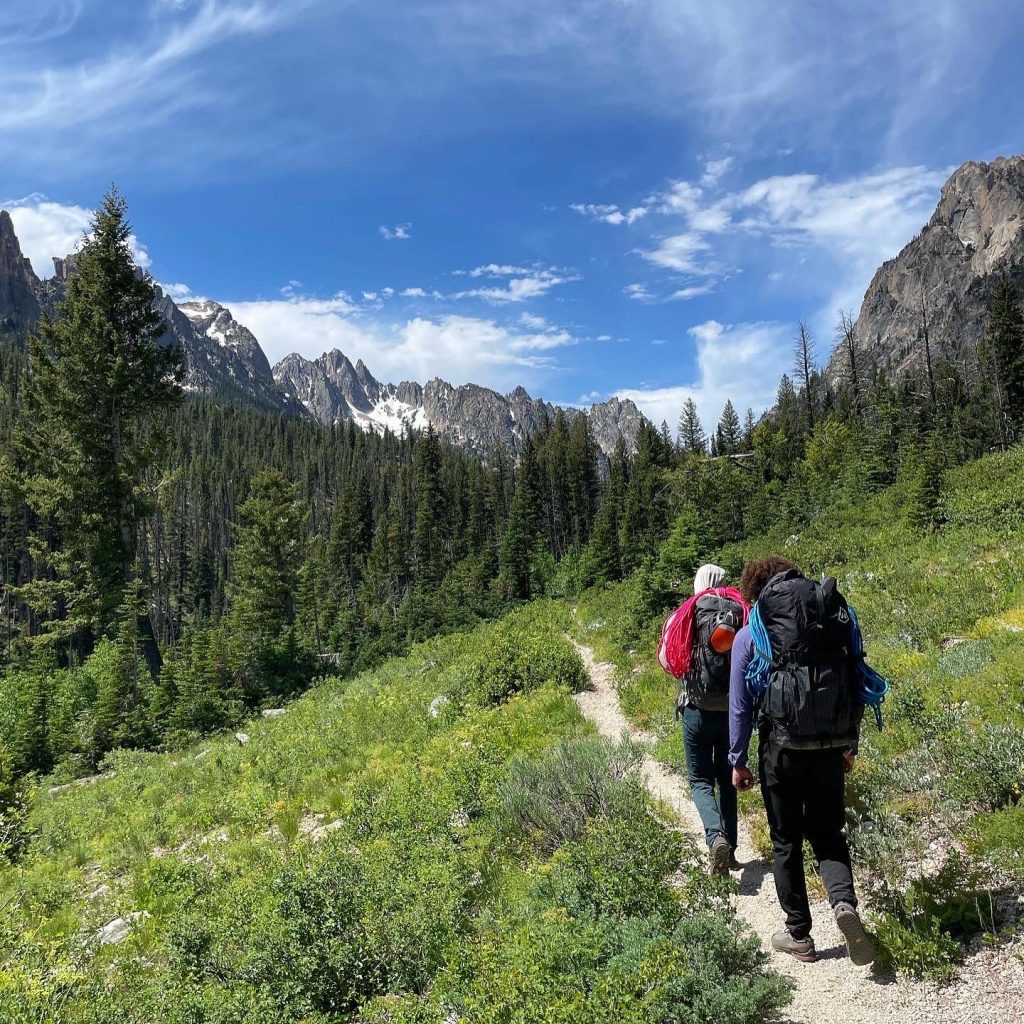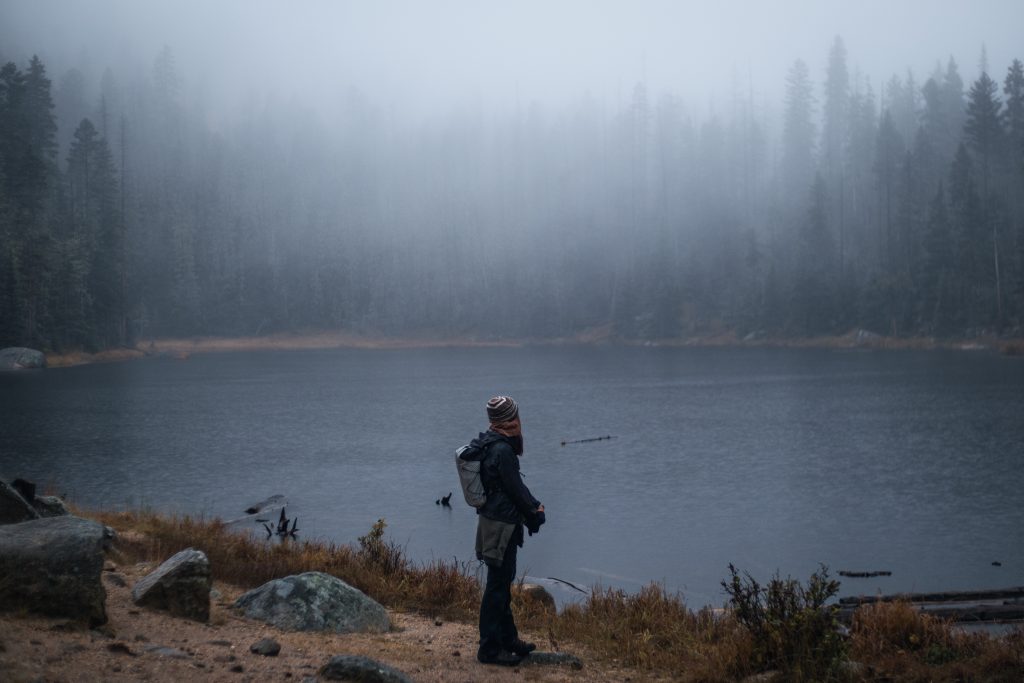
If you’ve ever felt the stillness of a forest, or witnessed the ebb and flow of a riverbed, you likely have experienced a feeling of awe. If you’ve seen the majesty of a wide-open landscape and the far-away peaks of mountains, you’ve likely felt humbled by the enormity of the world. And if you’ve left the cities far enough to escape the city lights, you’ve likely witnessed the endless expanse of the night sky, forming a celestial tapestry. And beneath a night sky like this – one filled with stars that are millions of light years away – it’s difficult not to think about our place in this world. It’s difficult not to contemplate where we’ve come from and where we are headed. In all of these settings and environments, it is easy to remember that we, like every other being, are dependent on Him, alone.
Experiencing this admiration of Almighty Allah’s creation allows us to contemplate on His power (qudrah), majesty, and glory. The Holy Quran reminds us:
“Verily, in the creation of the heavens and the earth, and in the alternation of the night and the day, and in the ships (and vessels) which sail through the ocean carrying cargo profitable for the people, and in the (rain)water which Allah pours down from the sky, reviving therewith the earth to life after its death, and (the earth) in which He has scattered animals of all kinds, and in the changing wind directions, and in the clouds (that trail) between the sky and the earth, duty-bound (under Allah’s command), certainly (in these) are (many) signs (of Allah’s Power) for those who put their reason to work.”1
Unfortunately, for many people, these experiences outdoors have been substituted: screens and walls have replaced open skies, and the sounds of construction and traffic overshadow the rustle of trees. Indeed, the increasing urbanisation of our world has contributed to some of the greatest advancements in the fields of technology, medicine, and education. Yet this rapid pace of urbanisation has also led to a growing disconnect from nature in both children and adults.

The Disconnect
This disconnect from nature has various implications, especially on mental and physical health, and this has become more apparent with recent literature.
For example, in a survey of 11,817 adults, children, and parents in the United States between 2015-2016, The Nature of Americans National Report study demonstrated that as children age, media use grows while time outdoors shrinks.2 In this survey, parents reported that their kids spend at least three times as much time on electronics (19 hours) than they do outside (7 hours) by the time they’re 12 years old! And the trend continues: many American adults spend 5 hours or fewer each week outside.3 This study only confirms what we are observing around us: collectively, both children and adults are spending more time in front of screens than creating experiences outdoors.
Furthermore, as time spent outdoors has decreased, the prevalence of obesity and ADHD has increased.4 In US children and adolescents, for example, the prevalence of ADHD was 6.1% in 1997-1998, and increased to 10.2% by 2015-2016.5 Although these numbers can be due to improved diagnostic means and recognition of the condition, a growing body of research is also demonstrating that spending time outside improves symptoms of ADHD; consequently, spending less time outdoors can worsen symptoms. In a study that surveyed children with ADHD, children who participated in outdoor activities appeared to have a significant reduction in their ADHD symptoms compared to controls in “indoor” settings.6 Of note, these settings were not national parks or backcountry environments – children had these results in “green settings” as simple as backyards, school playgrounds, city parks, or a stand of trees in the neighbourhood.7
Regarding obesity, from 1999-2000 through 2017-2020, the US obesity prevalence alone increased from 30.5% to 41.9%, and the prevalence of severe obesity increased from 4.7% to 9.2%.3 Not surprisingly, less time spent outside may also contribute to this increase, as time spent outdoors has been associated with decreases in BMI scores. Children who experienced higher levels of outdoor time, for example, were 42% less likely to be obese at the end of the year as compared with children who experienced low levels of outdoor time.8
The physical and mental benefits that come when we take a few steps outside are clear. Moreover, spending time outdoors can also serve as a unique pathway to deepening our spiritual connection with Almighty Allah and His Beloved Prophet (ﷺ).

Nature and Our Beloved Prophet Muhammad ﷺ
During a lecture on the ‘Love of the Prophet SAW’, Shaykh-ul-Islam Dr. Muhammad Tahir-ul-Qadri eloquently described several examples through ahadith how tones, mountains, branches, and trees are aware of Almighty Allah as their Creator – – and recognise His Beloved Prophet (ﷺ).9 Shaykh-ul-Islam explained how two things are compulsory for the natural world: the remembrance of Allah, and the love and reverence for His Beloved Prophet (ﷺ). This is evident in the following examples:
Regarding the natural world and His remembrance, Almighty Allah has said in the Qur’an:
“Have you not seen that (all) who are in the heavens and the earth glorify Allah alone, and the birds (too in the air around) with wings outspread (do celebrate His praise)? Each one knows his own mode of prayer and praise (before the presence of Allah). And Allah is Well Aware of the deeds they accomplish.”10
From this verse, it is evident that every creation in the heavens and earth glorifies Almighty Allah, each in its own mode of prayer that only Almighty Allah is aware of. And this truly applies to all of creation – including animals, plants, stones, and mountains.
In the same way, Almighty Allah has also made the love and respect for our Beloved Prophet (ﷺ) obligatory upon His creation. This is evident through several ahadith:
Ali ibn Abi Talib narrated how rocks and trees would greet the Prophet (ﷺ):
“I was with the Prophet (peace and blessings be upon him) in Makkah, and we went out to one of its suburbs. He did not face any mountain or tree but that it would say, ‘Peace be upon you, O Messenger of Allah.’”11
Additionally, there was one stone in a corner of a street in Makkah that used to send salutations of peace upon the Beloved Prophet (ﷺ) every time he would pass by it – even before the announcement of his Prophethood. Regarding this stone, Jabir bin Samurah reported that the Messenger of Allah ﷺ said:
“Indeed in Makkah, there is a rock that used to pay salutations of peace upon me during the night of my advent, and I know it even now.”12
Furthermore, there is the well-known observation of Bohira, the monk and scholar: before the declaration of prophethood, when he was a young child, Prophet Muhammad (ﷺ) was travelling towards Syria to trade with his uncle, Abu Talib, and some of the older men in Quraysh. It is narrated by Abu Musa Al-Ash’ari:
“Abu Talib departed to Syria, and the Prophet ﷺleft with him, along with some older men from the Quraish. When they came across a monk they stopped there and began setting up their camp, and the monk came out to them. Before that, they used to pass by him and he wouldn’t come out nor pay attention to them.” He said: “They were setting up their camp when the monk was walking amidst them until he came and took the hand of the Messenger of Allah ﷺ. Then he said: ‘This is the master of all the worlds, this is the Messenger of the Lord of the worlds. Allah will raise him as a mercy to all the worlds’ So some of the older people from the Quraish said: “What do you know?’ He said: ‘When you people came along from the road, not a rock nor a tree was left, except that it prostrated, and they do not prostrate except for a Prophet. And I can recognise him by the seal of the Prophethood which is below his shoulder blade, like an apple.’ Then he went back and made them some food, and when he brought it to them, he [the Prophet ﷺ] was tending to the camels. So, he said: ‘Send for him.’ So he came, and there was a cloud over him that was shading him. When he came close to the people, he found that they had beaten him to the tree’s shade. So, when he sat down, the shade of the tree leaned towards him. He (the monk) said: ‘Look at the shade of the tree leaning towards him.’”13

Bohira had read about the arrival of the final messenger in the Torah, the Injil, and other previous scriptures but had never seen Prophet Muhammad (ﷺ) before. It was only upon seeing the trees and rocks prostrate before Prophet Muhammad (ﷺ) that Bohira immediately knew that the Final Messenger had arrived.
Lastly, there is the beautiful example of Ustune Hannanah, the date palm tree stem which Prophet Muhammad (ﷺ) used to lean on while delivering Friday khutbah (sermon) in al-Masjid an-Nabawi. It was narrated by several companions, including Abdullah bin Abbas, Anas bin Malik, Tufail bin Ubayy bin Ka’b, and Jabir bin Abdullah:
“One day, a companion made a new pulpit in the mosque, and our Beloved Prophet (ﷺ) passed by the old tree stem to deliver the sermon from the new pulpit. Upon passing it, before even reaching the new pulpit, the dried tree stem started crying like a child. The Prophet (ﷺ) came down and embraced it on his chest as it continued to cry like a child being quietened. While the Prophet (ﷺ) embraced it, the weeping stopped after some time. The Prophet (ﷺ) asked the dried stem of the tree, ‘If you desire, I will send you back to the garden so that you can become a fresh and green tree-like before, remaining vibrant forever with fruit, or if you desire, I shall plant you in Jannah, where the Divine Friends of Almighty Allah (awliya) will have your fruit.’ The tree desired to be planted in Jannah. The Beloved Prophet (ﷺ) said, ‘By Allah, if I didn’t console it, it would continue crying in my love until the Day of Judgment.’”14
Regarding this example, the great wali and scholar, Imam Hasan al-Basri, would weep while teaching this miraculous event to his students. He would say to them: “A piece of wood demonstrated love and longing for Allah’s Noble Messenger (ﷺ), so you should feel more love than that.”15

Restoring Our Connection
As mentioned earlier, we do not have to make a trip to a national park to experience the benefits of nature, or to use nature as a pathway to deepen our connection with Almighty Allah and His Beloved Prophet (ﷺ) – a few steps outside is all one needs to start. The following are a few actionable steps for turning an ordinary walk into one that will allow us more nearness to Almighty Allah and His Beloved Prophet (ﷺ).
1. Set your intention. As with any act, the intention, niyyah, is important. Before your walk, start with ablution (wudu), and set the intention to seek closeness to Almighty Allah and His Beloved Messenger (ﷺ).
2. Mindfulness. Be fully present. Keep your phone away, quiet your mind, and tune in to the sounds, sights, and scents around you. The sounds of birds and leaves and the scent of flowers all serve as a reminder of Almighty Allah’s power, mercy, and beauty, and the intricacy and balance He has created.
3. Contemplation and Durood: When you see trees, mountains, branches, or stones, remember the ahadith that described how even these objects had love and respect for our Beloved Prophet (SAW), and that they recognised him even before his prophethood was announced. Let the trees and rocks you are surrounded by outside serve as reminders for you to send Salawat upon the Beloved Prophet (ﷺ).
4. Dhikr and Dua: When you are spending time in the outdoors, you are spending time in the presence of things that are always remembering Almighty Allah. Take a few moments to pray or engage in Dhikr, the remembrance of Almighty Allah, during your walk. This could be as simple as reciting short phrases like “Subhan Allah” (Glory be to Allah), “Alhamdulillah” (All praises be to Allah), or “Allahu Akbar” (Allah is the Greatest).
5. Sustainability and Care: There are many examples of the natural world loving RasoolAllah SAW; similarly, we should love nature for its love for RasoolAllah SAW. Remember that nature is a trust (amanah) from Almighty Allah, and we must treat the environment responsibly. Leave every place better than you found it, and follow leave-no-trace principles.
By restoring our connection with nature, we not only improve our health and well-being, but Almighty Allah also allows it to be a means of spiritual connection to Him and His beloved Prophet (ﷺ), whom the natural world recognised, loved, respected, and saluted.

1 Shaykh-ul-Islam, Dr.Muhammad Tahir-ul-Qadri. The Glorious Quran. Minhaj-ul-Quran Publications, 2011. 2:164
2 Stephen Kellert et al., «The Nature of Americans National Report: Disconnection and Recommendations for Reconnection» (DJ Case and Associates, 2017).
3 Kellert et al., 2017.
4 Guifeng Xu et al., «Twenty-Year Trends in Diagnosed Attention-Deficit/Hyperactivity Disorder Among US Children and Adolescents, 1997-2016» (2018), CDC, «National Health and Nutrition Examination Survey,» accessed July 5, 2023, https://www.cdc.gov/obesity/data/adult.html.
5 Xu et al., 2018.
6 Frances E. Kuo, «A Potential Natural Treatment for Attention-Deficit/Hyperactivity Disorder: Evidence From a National Study» (2004).
7 Kuo, 2004.
8 Arya Ansari et al., «Combating Obesity in Head Start: Outdoor Play and Change in Children›s Body Mass Index» (2015).
9 Minhaj TV, «Muhabbat-e-Rasool (Ahwal e Jamadat o Nabatat ki Roshni mein),» January 6, 2006; Jamia Masjid Minhaj-ul-Quran, Lahore, https://youtu.be/IXh69r6-rZQ.
10 The Glorious Quran. 22:41.
11 At-Tirmidhī in Sunan, Bk: The Virtues of the Prophet, Ch: What has been related about the signs proving Prophethood of the Prophet (ﷺ), and what Allah, the Mighty and Sublime, distinguished Him with, # 3626.
12 At-Tirmidhi in Sunan, Bk: The Virtues of the Prophet, Ch: What has been related about the signs proving Prophethood of the Prophet (ﷺ), and what Allah, the Mighty and Sublime, distinguished Him with, # 3624.
13 At-Tirmidhi in Sunan, Bk: The Virtues, Ch: What has been related About The Start of The Prophet’s Prophethood, #3619. Also reported by al-Hakim, al-Mustadrak, 2:615; Imam Bayhaqi, Imam abu Nuaeym, Imam hajr Asqalani.
14 Sahih al-Bukhari 2:3584. Also reported by Ibn Shayba, Ibn Majah, Tabarani in al-M’ujam al Awsat, Abu Ya’la, at Tirmidhi in Sunan, Ahmad in Musnad, Daarimi in Sunan 1:32.
15 Qadi Iyad, ash-Shifa, 1:305.